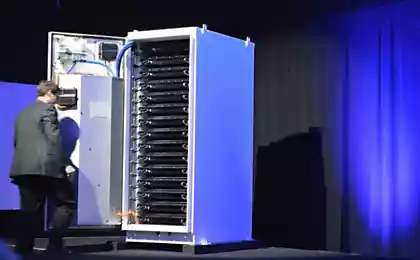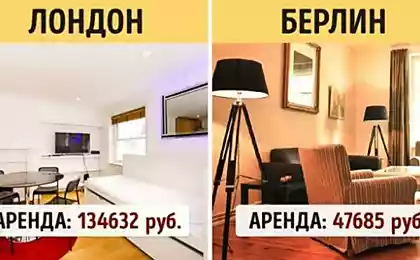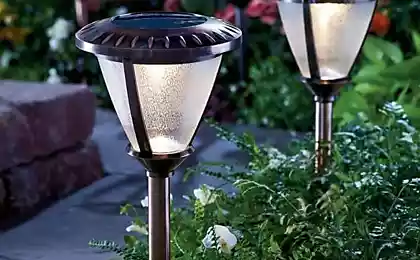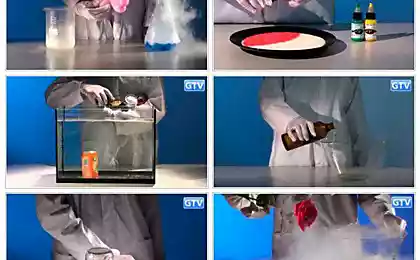518
Self-shading of the window from RavenBrick
Today, one of denmarka company (Colorado, USA) working on the creation of special coatings for glass, changing their color and transparency depending on the ambient temperature. One of the founders of the company and its current RavenBrick President wil McCarthy (McCarthy Wil) announced plans to increase venture capital $ 3 million for a plant producing such a coating. Its launch will take place this year.
One of the latest trends in architecture – the use of large Windows, allowing the maximum use of natural (more pleasing to the eye) lighting and reduce energy consumption by artificial lighting. However, besides the abundance of light and beautiful panoramic views from the Windows in the wall there is a downside – excessive heat of the sunlight makes the office ladies ' and gentlemen's active use of air conditioning, defeating all of the expected savings.
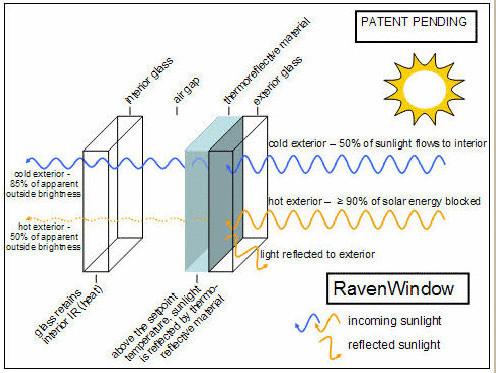
The company RavenBrick has developed a liquid material that, when placed in the plastic film, and represents an innovative new coating for window glass. When you reach a certain (threshold) value of the temperature of the glass film begins to darken, measuring the brightness of sunlight and absorption of heat into the room. According to McCarthy, the rate of "toning" at the same time depends on the method of heat distribution in the glass, and on average, 10 minutes.
The idea of creating "intelligent glass", in General, is not new. At the moment there are already some similar technologies, running in production and under development. For example, the company Soladigm and Sage Electrochromatics in 2010 received funding for the production of Windows with glass that changes transparency at the command, filed with the electrical signal.

Technology RavenBrick, however, is driven not by electricity and heat (also due to the fact that it is based on research conducted by McCarthy in space). This, in particular, facilitates the installation of these Windows, because they do not need any wires, and the cost of materials promises to be significantly lower. Representatives of the company podchitali that the sub-buyers funds will pay off over several years.
"At the core of our technology are liquid crystals. Your TV has a matrix of liquid crystals, switchable with electricity. Each pixel contains a crystal triode, which can be apply or not to apply the voltage, depending on which pixel lights up or stays dark," explained wil McCarthy. – "We do the same thing with one big pixel, but it is not activated by an electrical signal, and temperature."
Last year, a new film for glass have been installed at the National renewable energy laboratory and the offices of the company. The initial temperature of the dimmer can be adjusted in the production process, however, and the standard 35 degrees Celsius on the outer surface of the window suitable for many types of climate.
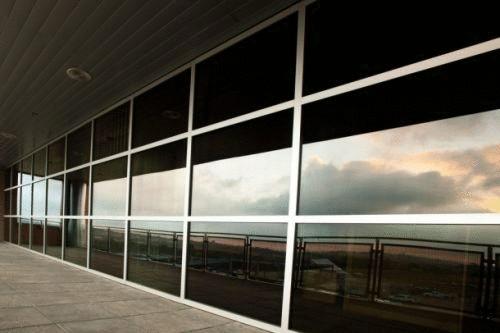
According to the President of the company, RavenBrick has no plans to engage in direct implementation of development in the market. Instead, the film will be sold to manufacturers of Windows, which can improve their products.
The founders RavenBrick has decided to first focus on building self-shading glass, but the underlying technology of thermally modified nanomaterial can be used for other purposes. McCarthy hopes that in the future they will be able to develop the coating, is able to partially absorb and reflect sunlight. The final purpose it is the creation of walls, responsible for the transmission of solar heat inside the premises.
Source: /users/104
One of the latest trends in architecture – the use of large Windows, allowing the maximum use of natural (more pleasing to the eye) lighting and reduce energy consumption by artificial lighting. However, besides the abundance of light and beautiful panoramic views from the Windows in the wall there is a downside – excessive heat of the sunlight makes the office ladies ' and gentlemen's active use of air conditioning, defeating all of the expected savings.

The company RavenBrick has developed a liquid material that, when placed in the plastic film, and represents an innovative new coating for window glass. When you reach a certain (threshold) value of the temperature of the glass film begins to darken, measuring the brightness of sunlight and absorption of heat into the room. According to McCarthy, the rate of "toning" at the same time depends on the method of heat distribution in the glass, and on average, 10 minutes.
The idea of creating "intelligent glass", in General, is not new. At the moment there are already some similar technologies, running in production and under development. For example, the company Soladigm and Sage Electrochromatics in 2010 received funding for the production of Windows with glass that changes transparency at the command, filed with the electrical signal.

Technology RavenBrick, however, is driven not by electricity and heat (also due to the fact that it is based on research conducted by McCarthy in space). This, in particular, facilitates the installation of these Windows, because they do not need any wires, and the cost of materials promises to be significantly lower. Representatives of the company podchitali that the sub-buyers funds will pay off over several years.
"At the core of our technology are liquid crystals. Your TV has a matrix of liquid crystals, switchable with electricity. Each pixel contains a crystal triode, which can be apply or not to apply the voltage, depending on which pixel lights up or stays dark," explained wil McCarthy. – "We do the same thing with one big pixel, but it is not activated by an electrical signal, and temperature."
Last year, a new film for glass have been installed at the National renewable energy laboratory and the offices of the company. The initial temperature of the dimmer can be adjusted in the production process, however, and the standard 35 degrees Celsius on the outer surface of the window suitable for many types of climate.

According to the President of the company, RavenBrick has no plans to engage in direct implementation of development in the market. Instead, the film will be sold to manufacturers of Windows, which can improve their products.
The founders RavenBrick has decided to first focus on building self-shading glass, but the underlying technology of thermally modified nanomaterial can be used for other purposes. McCarthy hopes that in the future they will be able to develop the coating, is able to partially absorb and reflect sunlight. The final purpose it is the creation of walls, responsible for the transmission of solar heat inside the premises.
Source: /users/104


